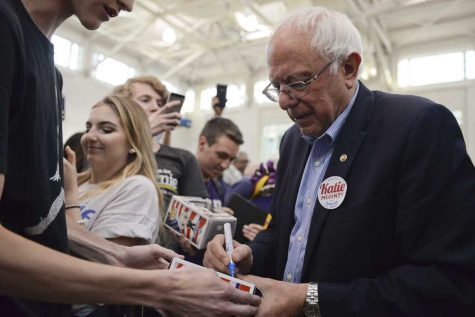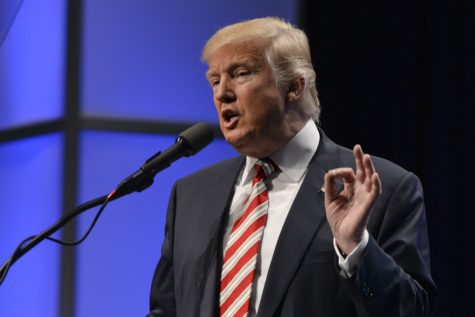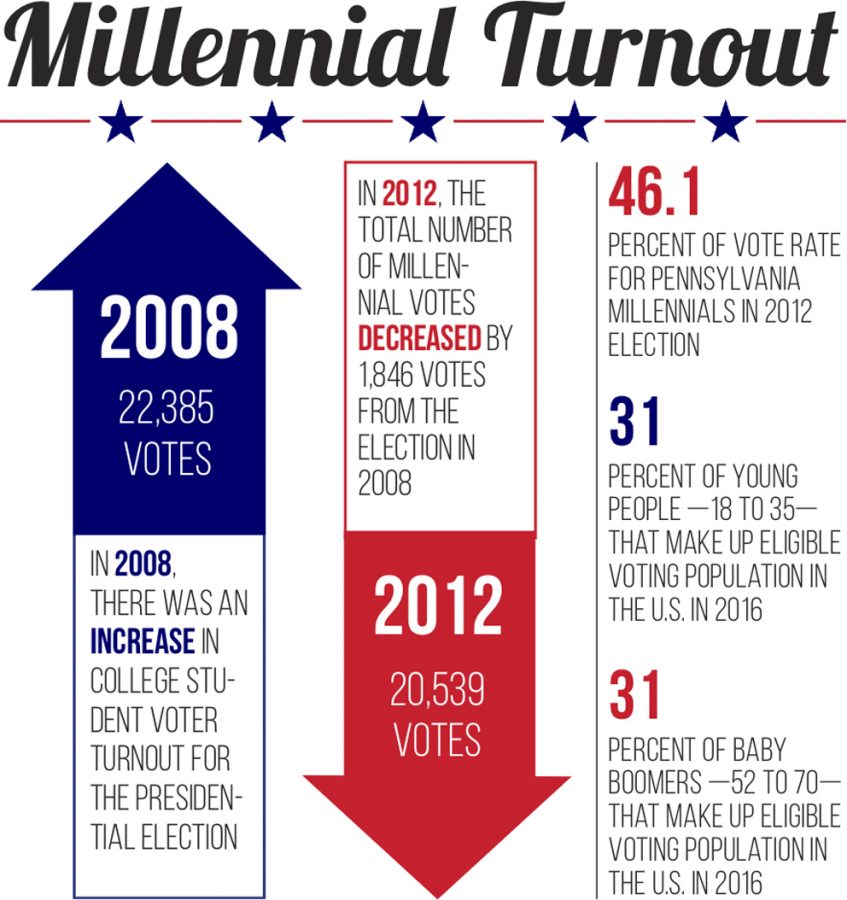To campaign for Democratic presidential nominee Hillary Clinton, President Barack Obama did something no other president has done before: he snapped.
Obama made a five-minute Snapchat video Monday on the app’s political channel “Good Luck America,” in which moments of an interview between Obama and Peter Hamby, the channel’s host, appear between snippets of the 2016 election. POTUS concludes with a selfie video, telling viewers if he can figure out Snapchat, they can figure out how to vote.
Obama’s appearance on the popular app is a paragon of the ways this year’s candidates and their backers have tried to pander for the millennial vote. In every visit politicians have made to the Steel City this year — and the visits have been plentiful around campus — they’ve preached about the importance of young people in this election.
“I just want to send a message to you college students, and I mean this from the bottom of my heart,” Vice President Joe Biden said when he visited Chatham University Oct. 25. “I am more optimistic about the prospects for America today than I have ever been in my life, and that is not an exaggeration.”
Vermont Sen. Bernie Sanders was massively popular with young people, garnering support from 54 percent of millennials — loosely considered those between the ages of 18 and 29 — according to a 2016 Harvard poll. But after his loss, much of that age group didn’t funnel their enthusiasm toward either of the two establishment parties.

Instead, millennials — whose voter turnout rates have been dropping for years — have overwhelmingly said they might not vote, or will write-in or vote for a third party, leaving Republican nominee Donald Trump and Clinton scrambling to win them back.
Experts like Mary Ann Caton, assistant professor of history and political science and chair of the liberal arts division at the University of Pittsburgh at Titusville, are noticing the way young people have influenced campaigns.
“Clinton is in panic mode with college students in particular, so that’s why they’re bringing heavy [hitting] people such as Michelle Obama onto college campuses,” Caton said. “If she wasn’t, then she would think she had college students in the bag.”
Victoria Shineman, assistant professor of political science at Pitt, has found students enrolled in her classes are more interested in politics than they’ve ever been, but maybe not for the right reasons.
“Many people who typically avoid politics have been caught up in the controversies and entertainment of the campaign,” Shineman said.
From the 2008 election to the 2012 election, millennial votes decreased by 1,846. Millennial voter turnout went from 48.5 percent in 2008 to 41.2 percent in 2012, according to the Pew Research Center.
It’s yet to be seen whether the intrigue Shineman’s noticed among students will translate to the ballot box.
In 2008, there was an increase in college student voter turnout for the presidential election, but in the 2012 election, the total number of college student votes decreased. The total number of millennial votes fell by 1,846 votes from the election in 2008 to the 2012 election.
Young people –– ages 18 to 35 –– make up 31 percent of eligible voters in the United States, according to the Pew Research Center. Millennials and Baby Boomers — ages 52 to 70 — account for 31 percent as well.
Caton said the difference in these age groups is that many college-aged people do not make up their minds in time to register.
“There is going to be low voter turnout across the board because most students do not get interested in the election until the week before and it’s too late,” Caton said.
Nick Trizzino, a sophomore undeclared major at Pitt, said he thinks students are turned off because the candidates haven’t addressed enough issues that affect college students.
“I think Bernie got so much support from college students. The main issue on college students’ minds is, like, paying for college and getting jobs,” Trizzino said.
A large part of Sanders platform was based on offering free college education. His educational initiatives pushed Clinton to make her own platform on college debt more progressive — her plan includes free community college and debt-free education for students from families that make less than $125,000.
Trump’s policy on education includes working with Congress to ensure colleges and universities make an effort to reduce the cost of college and student debt in exchange for federal tax breaks and tax dollars.

Part of the issue, said sophomore mechanical engineering major Alex Ferguson, is that this election has been so heavily influenced by media saturation — which millennials are particularly vulnerable to. Campaigns tend to use social media — like Obama’s use of Snapchat — to consistently get their platforms on young adults’ radars.
“In general it got to the point of exhaustion and numbness and that is what the election is turned into,” Ferguson said. “I think it’s more about scandal and just Hollywood TMZ reporting instead of actual policy reporting.”
And, he added, millennials aren’t all single-issue voters.
“I really haven’t seen either candidate address the gap in wealth, too much how to get lower class people in line with middle class, and get the 1 percent to stop rising so rapidly,” Ferguson said.
Gabriel Kaufman, sophomore finance and marketing major, also said social media has overhyped and dramatized the election and wants to see more focus on international issues.
“The scandals in this election have distracted away from the Syrian Civil War and Iran deal issue,” Kaufman said.
On campus, political groups such as the Political Science Student Association, NextGen Climate and campus Democrats and Republicans, have been pressing their peers to vote for months.
Kait Pendrak, president of the PSSA, said the group has tried to draw students’ attention toward the other, less publicized races.
The PSSA will host a candidate fair Nov. 6, where local campaigners can plug for their candidates in a last-ditch effort to garner support on Election Day.
“It is not just the presidential election, it’s also the Senate election that’s happening in Pennsylvania,” Pendrak said.
Shineman said students should plan ahead by making a “voting day plan” — one that includes figuring how to get to and from the polling place and still make it to class, for example.
Because Pennsylvania is a swing state, college students in the area could have a big impact in this election.
“We really do have a voice in this election and we need to make sure we claim that and actually get out and vote,” Pendrak said.


